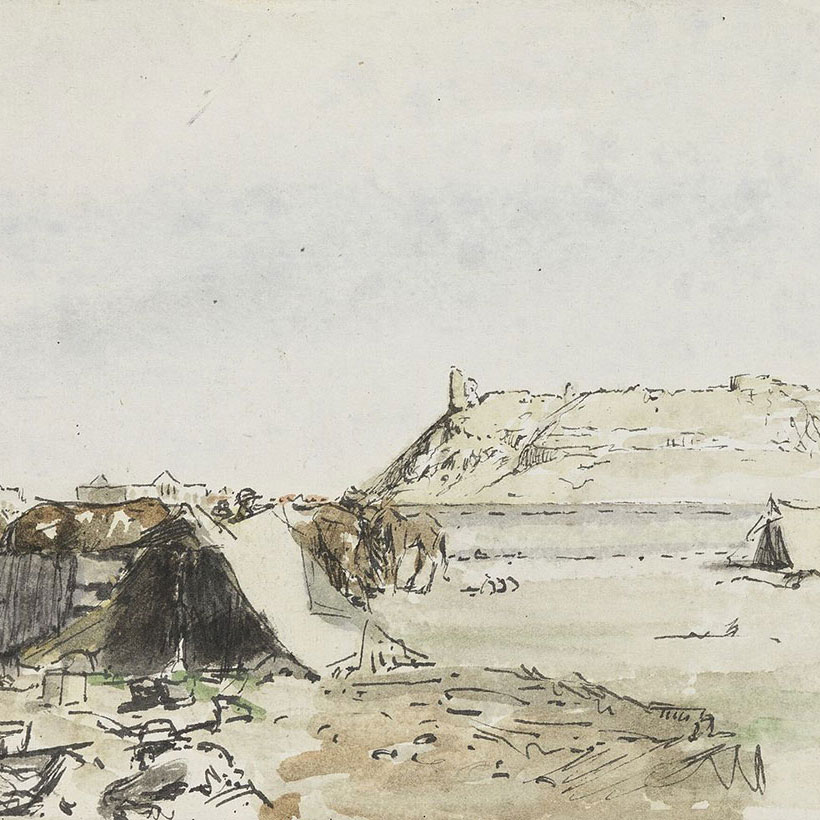Homs is the third-largest city in Syria, coming in after the country’s capital, Damascus, and the northern city of Aleppo. It’s unclear if the city still enjoys that prestigious title, thanks to the ravaging effects of the Syrian Civil War. In pre-historic Syria, Homs was known as Emesa. The city is tucked away in western Syria, 162 kilometers from Damascus. Its location on the Orontes River makes Homs a connecting city between Syria’s interior towns and the Mediterranean coast. Homs was once a vibrant industrial city that also boasted cultural and religious diversity, from Christians to Sunni and Alawite Muslims. Like most cities in the Middle East, Homs has hosted various kinds of settlers and rulers from pre-historic times. Most settlers that once dominated the city left iconic architectural monuments in their wake, some of which stand to this day.
Homes Architecture before the 7th Century
The best way to understand the style of architecture that dominated Homs before the 7th century is to investigate the architectural designs of structures and monuments that came up during this period. A notable mention is the Citadel of Homs that was founded in the 3rd millennium BCE.
The Citadel of Homs is a castle that’s presently in a state of ruins. It’s locally known as the Citadel of Usama, in tribute to Usama bins Mungidh. The Citadel of Homs was built during the Roman Syria era. The castle is believed to have been constructed during the periods of the militarization of the Near East, an era that resulted from Crusader invasion of Islamic lands in the Middle East. Muslims living in Syria at the time are believed to have used this citadel as a fortress during the time. Also, the citadel has been used as a warehouse and accommodation facility, as well as an administrative center.
The castle features semi-circular walls, with numerous rooms. Excavation activities commissioned in 1994 by the Syrian Department of Antiquities uncovered that the citadel also sported an arched doorway from its east, complete with a flight of steps. The walls were extensive and were constructed with huge blocks of basalt and mortared using hard lime plaster. The interior walls also featured impressive white limestone blocks, all of which are characteristic of Roman architecture.
Homs Architecture between the 7th and 18th
In the period post the 7th century, the old city of Homs became even more receptive to different religious faiths. Islam, Christianity, and Judaism flourished side by side. Christians and Muslims collectively participated in the construction of many of the structures in the old Homs. Other residential and commercial buildings primarily followed the architectures of churches and mosques. Most houses and their backyards featured basalt black stone, which was a common construction material in the region at the time.
The Khalid ibn al-Walid Mosque located along Hama Street is one of the oldest structures that might help paint a picture of the ancient architecture of Homs. Named after an Arab military commander, Khalid ibn al Walid, this 7th-century mosque features an Ottoman-Turkish architectural design. His mausoleum sits in one corner of the prayer hall within the mosque.
Khalid ibn al-Walid Mosque
Khalid ibn al-Walid Mosque features a large courtyard with the interior walls adorned in alternating bands of white and black stone. The mosque also features two tall white-stone minarets with galleries built from black and white stone, which run horizontally in alternating rows. The windows sport a white limestone while the large central dome is metallic and silver-painted. Four monumental columns designed in the Mamluk ablaq style support the mosque. Much of the interior of this mosque comprises of a prayer hall made up of basalt stone.
Another structure that might offer a glimpse into the ancient architecture of Homs is the Souk of Homs. The souk was largely undocumented until after the Syrian Civil War when architect Ghassan Jansiz visited the place. Though it was now in ruins, Jansiz was able to reconstruct the design of this souk based on his memories of the space before the bombardment. Like most souks across the Middle East, the Souk of Homs featured an Ottoman-style construction with a delicate roof arching as well as circular and wavy lines along the walls.
Krak des Chevaliers
Lastly, we have the Krak des Chevaliers, also known as the Fortress of the Kurds. The history of the Krak des Chevaliers castle dates back to 1142 when it’s believed to have been first inhabited. The castle was mainly built using limestone. The entrance featured a walled suburb called a burgu and an imposing triangular outwork formed the layout of the outer ward of the castle’s south.
Its interior featured a stone curtain wall that was adorned with square towers that projected slightly. The main entrance to the castle was between two towers towards the eastern side, with a postern gate towards the northwest tower. A central courtyard surrounded numerous vaulted chambers within the citadel. The walls of the castle were supported using a steeply-sloping glacis, from which four large towers projected. The large, round walls were used for accommodation by the knights, hosting up to 60 knights. Some evidence of Gothic architecture could also be traced to this castle in the form of tracery and delicate decorations used.
It’s difficult to pinpoint a specific architectural style that dominated the old city of Homs. That’s because most of the structures built during the pre-historic times were already in ruins even before the Syrian Civil War. When the war happened, most of the remaining ancient buildings were permanently destroyed. But thanks to historians, the ancient architecture of Homs isn’t entirely lost.











